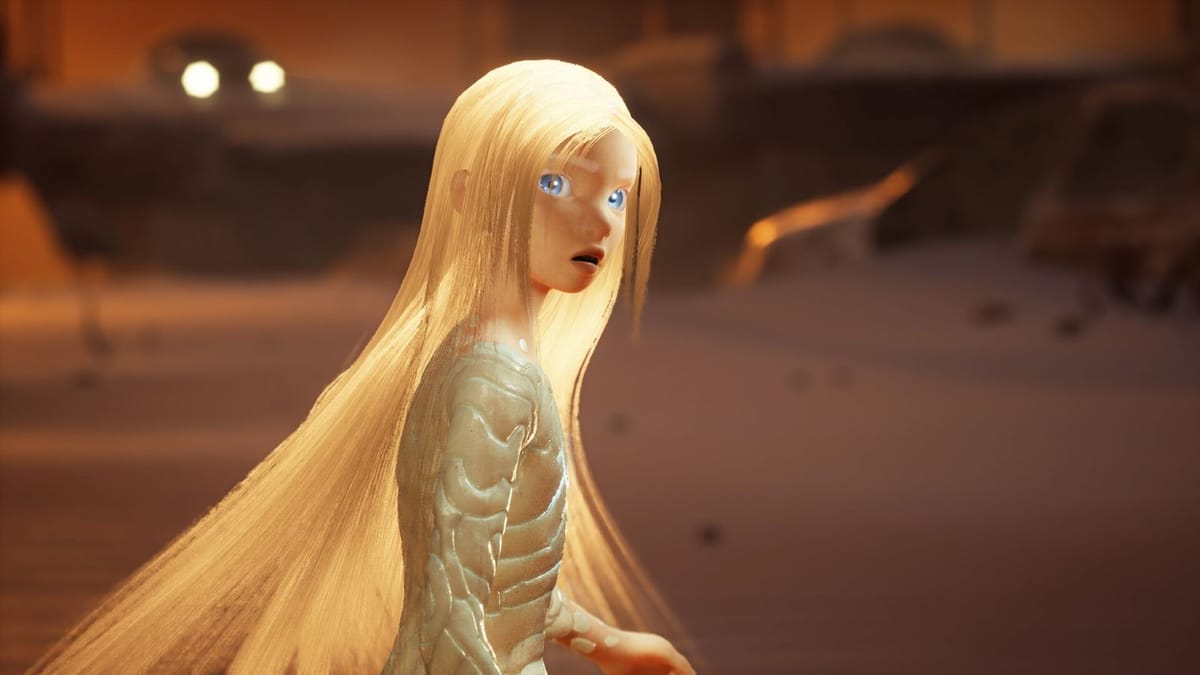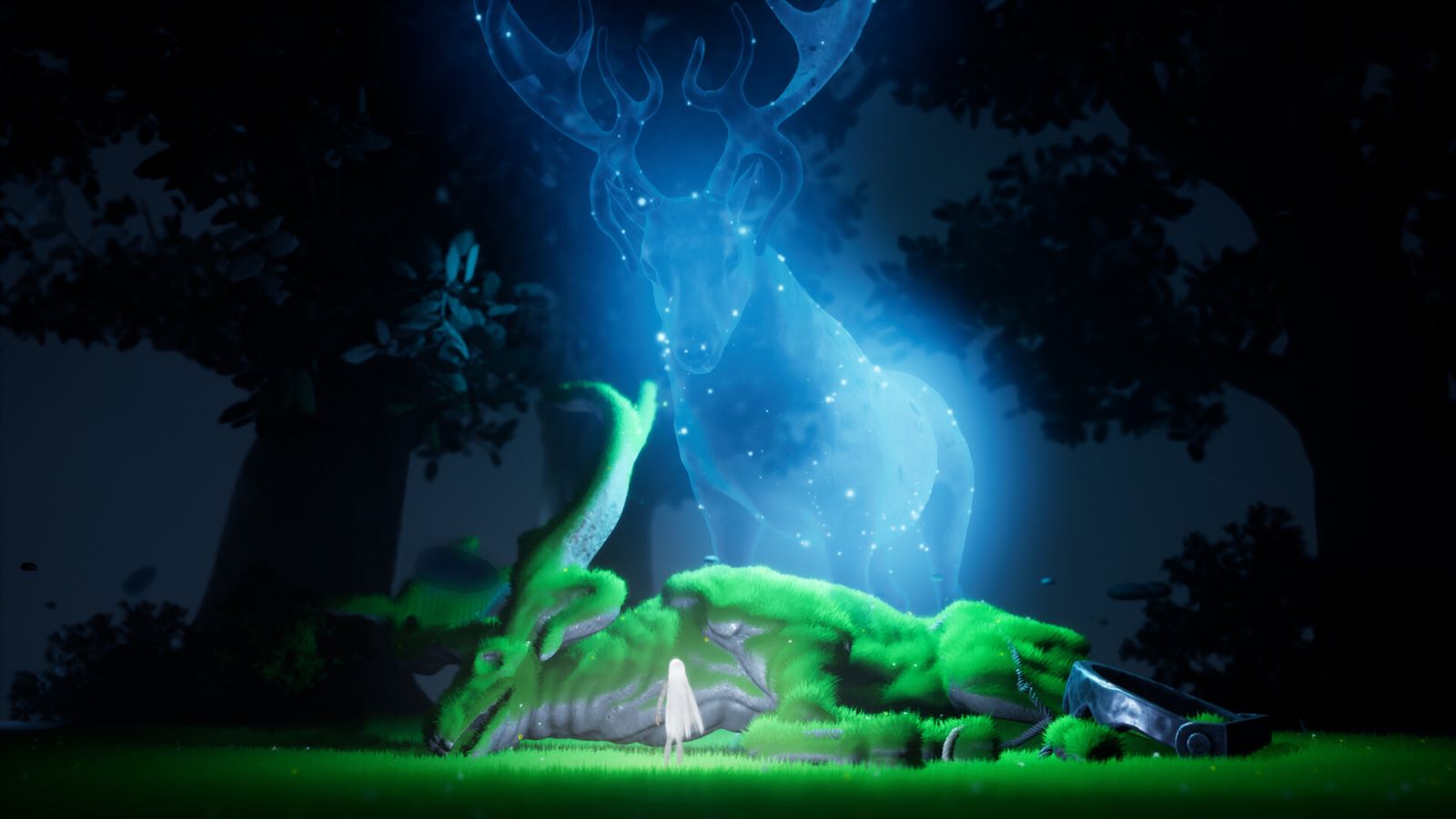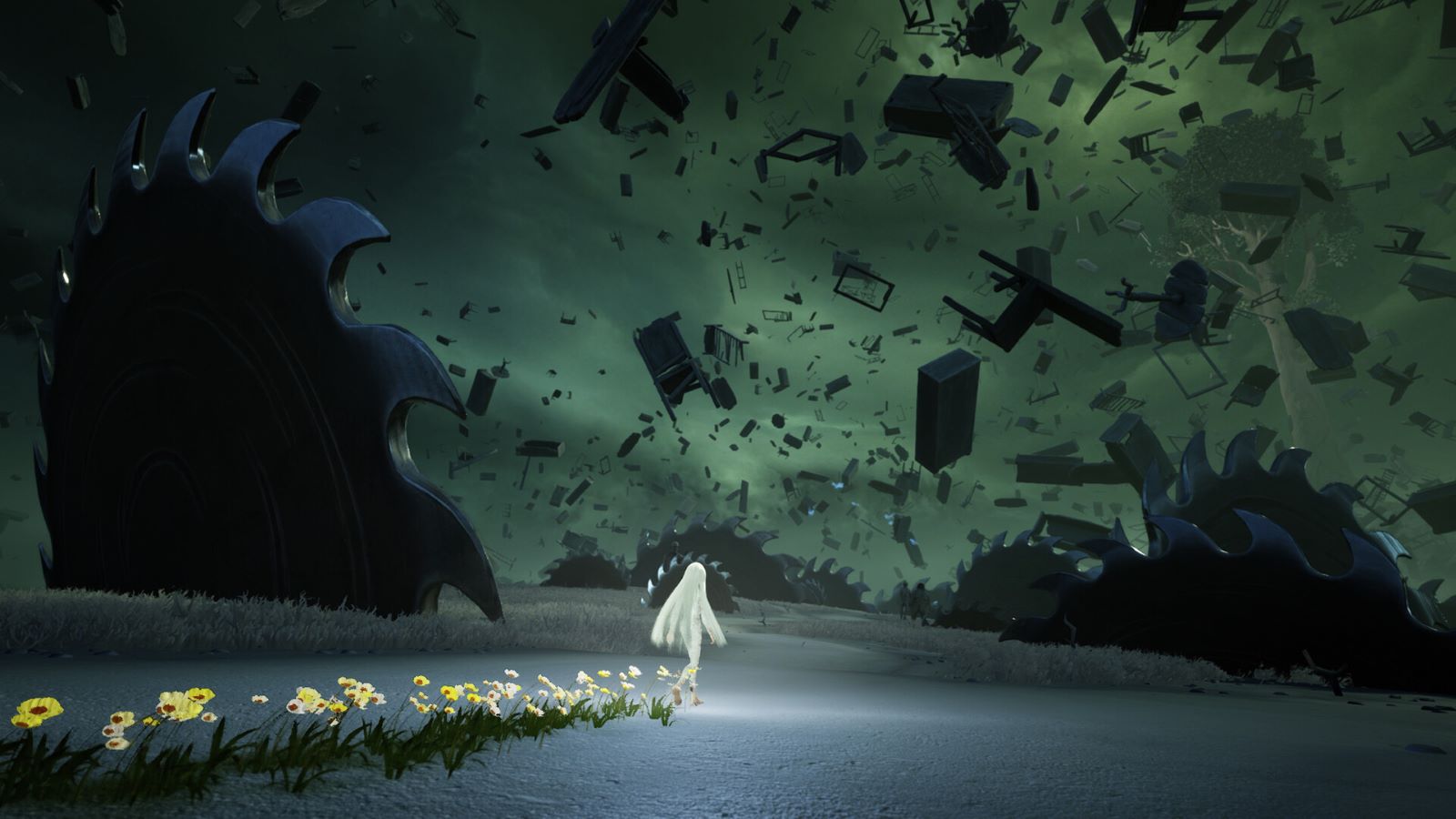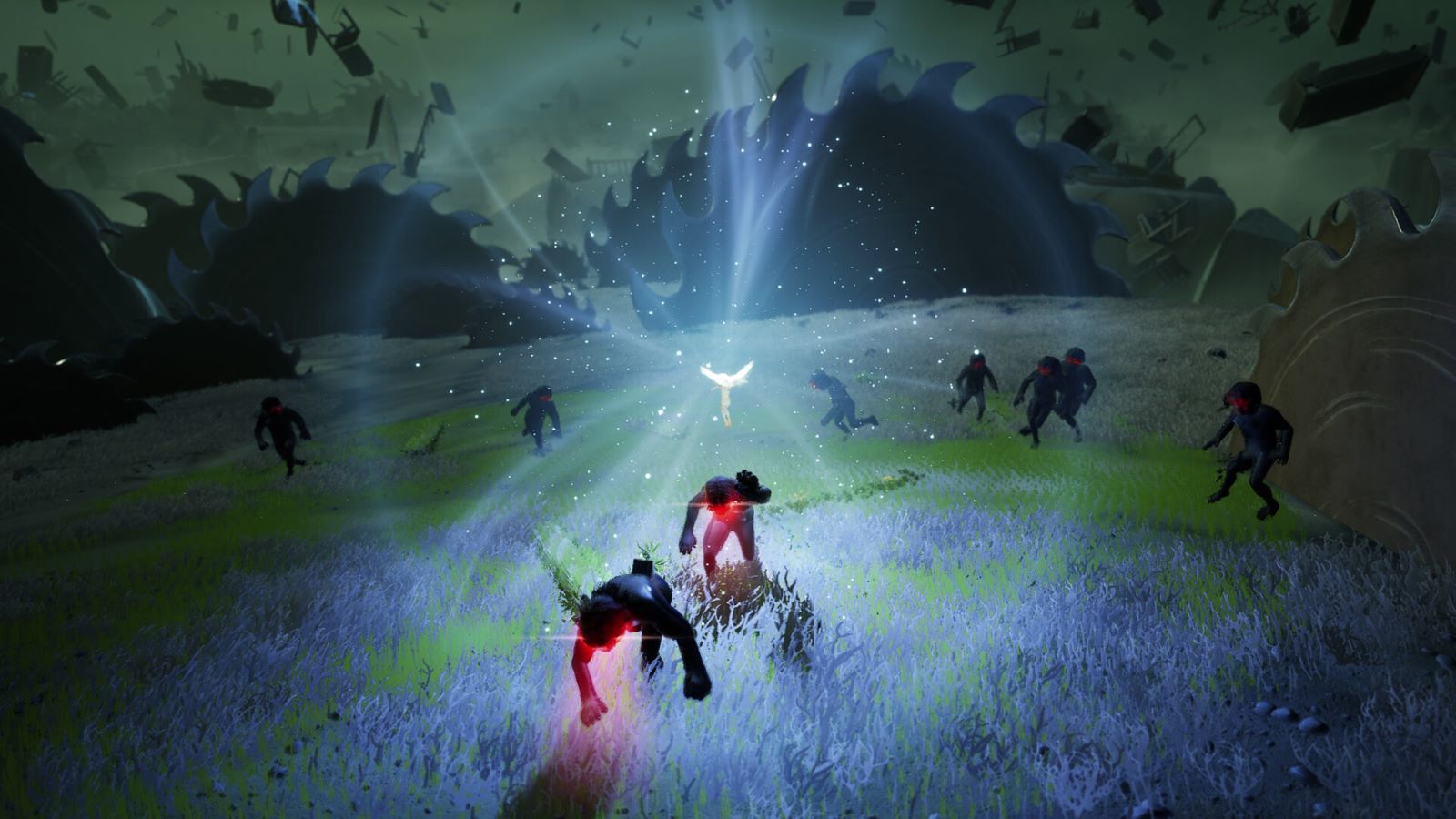
It’s an ambitious task when game studios lay a foundational theme in their work. If too much focus is on projecting their message, then gameplay elements have the potential to be weaker, and vice versa. It’s the same occurrence that can happen in all art forms, including film and books. Many studios invest in this because magic happens when a perfect balance of thematic elements and game design exists. Unfortunately, After Us misses the target as too much emphasis on its subject matter dilutes most other aspects of the game.
After Us, at its core, is a short story about the after-effect of continuously destroying both wildlife and their habitat. You take control of the central character, Gaia, who has been tasked with embarking on a desolate and destroyed world by the “Mother.” The last animals have been killed, but “Mother” has sacrificed her life force in order to seal their souls inside them. It’s up to Gaia to traverse, via platforming and puzzle-solving, a world void of life and beauty.
You start from the central point, The Ark, and are given eight remaining vessels to seek out. Each vessel lies in one of eight different regions that branch out from the Ark like an aged root beneath a white oak tree. Upon reaching the twig of each main branch, you’ll experience the final moment of that region’s animal vessel before transporting its life force back to the safety of the Ark.
Along the way, Gaia learns of other animals that can be saved as well. The other animal spirits scattered throughout sadly serve no purpose other than becoming holographic images you can interact with (pet) within that region, and it’s never explained what makes the eight vessels special from these. Like the smaller animal vessels, you can also find hidden memories located in each area. After discovering each one, you’ll unlock a drawing that is a piece of a story from a person or family before the devastation of the planet. Sadly, I stopped searching because they added no gameplay benefit, and we aren’t told who these families are. There is no emotional attachment to them, and it’s one of the frustrating qualities of After Us because we are given two side objectives with zero reasons to complete them.
The gameplay foundation is navigation, with a wealth of light parkour sections, alongside simplistic and quick puzzle encounters. I experienced no issues controlling Gaia from section to section, and the jumping and dashing response was fairly fast, but that wasn’t my issue with the gameplay. Players will spend the majority of their time running in After Us, and after the first couple of hours, it becomes old quickly. The platforming jumps are easily accessible, and without the presence of combat added, it is monotonous.
Speaking of combat, the only enemies you’ll run into are former human absurdities known as devourers. They could have been a fun and engaging obstacle preventing players from simply running through without interference, but they are delegated to simple afterthoughts running predictable paths at a snail’s pace.
Aside from running and jumping, you gain special abilities as Gaia progresses through the game. They add slight depth and diversity to the gameplay, but it’s no saving grace. Using the “heart of the forest,” Gaia can throw out and then recall a small ball of light that resurrects hidden animal spirits and is used to combat devourers. The other way to use “the heart” is by holding in the attack until you unleash a spreading effect that produces grass and flowers for a short duration. The only purpose of that specific attack is to allow Gaia to reach and cross certain areas covered with oil and sludge. It’s a boring gameplay loop with no further progression or expansion and pushed me to avoid enemies because it wasn’t worth my time to engage in combat.
The boring gameplay loop sums up my experience with After Us. It features no expanding arsenal of skills to pursue and master alongside a side quest that offers no incentive to pursue other than a PlayStation trophy or seeing holographic animals scattered around. The combat is stale with an enemy system that’s easy to ignore and offers no value. I found myself wanting to complete the game solely to see if anything changes or improves, and I left disappointed.
What didn’t disappoint in After Us is the art design partnered with an incredible score. Each region is visually and thematically different such as a polluted oceanic seafloor or a barren and desolate national forest. The visual presentation forces a harsh reality about what the future could hold for our beautiful and radiant planet. I especially enjoyed the score as traversing from area to area, the music shifted to coincide with that specific region. These components are a highlight and something players hopefully appreciate.
Overall, After Us is a game I’m not going to remember or want to revisit. From a gameplay perspective, it falls flat in a majority of areas. The visuals and sound design are lone bright spots, but they don’t save After Us from being a slog to play. The game would’ve been better suited as a VR experience where the message and visual journey could’ve shined without worrying about putting a video game into it.
After Us
Mediocre
After Us presents a strong message about planet conservation and wildlife preservation. However, weak gameplay and hollow-level design make the game a running simulator rather than an engaging platformer.
Pros
- Fantastic environment and skybox art
- Terrific music score
- Strong thematic message in its narrative
Cons
- Lifeless combat system
- Repetitive platforming with no variance
- Side quests with no reason to do them
- The gameplay becomes stale early on and doesn’t change




